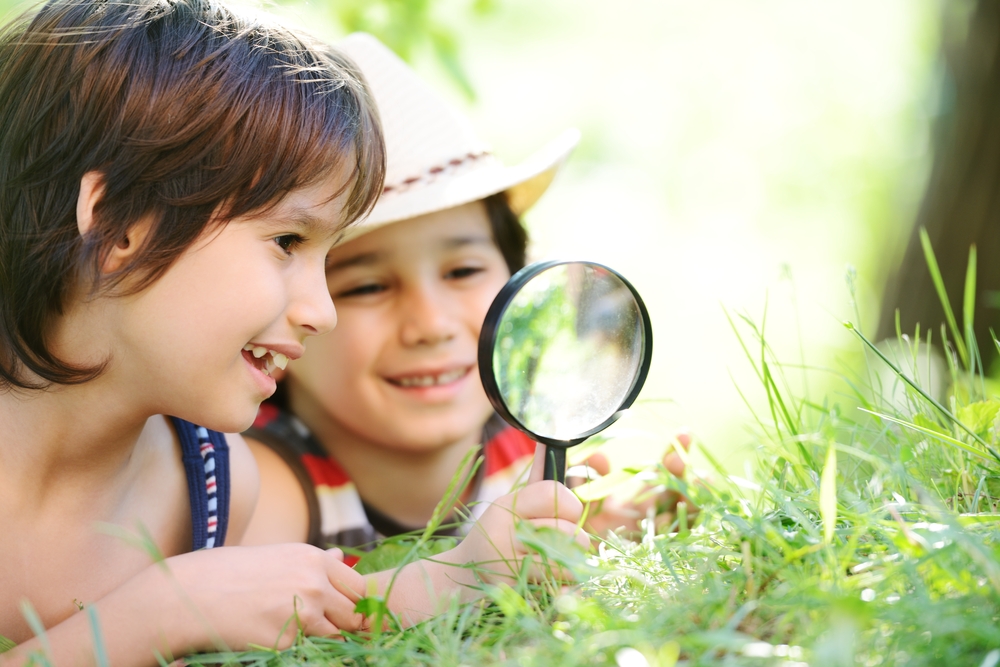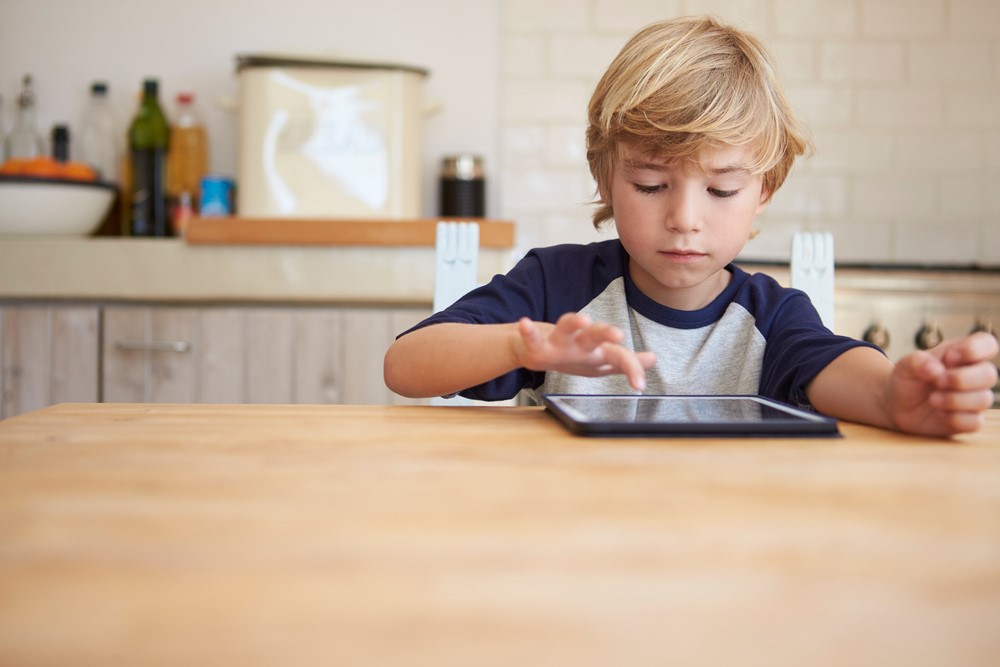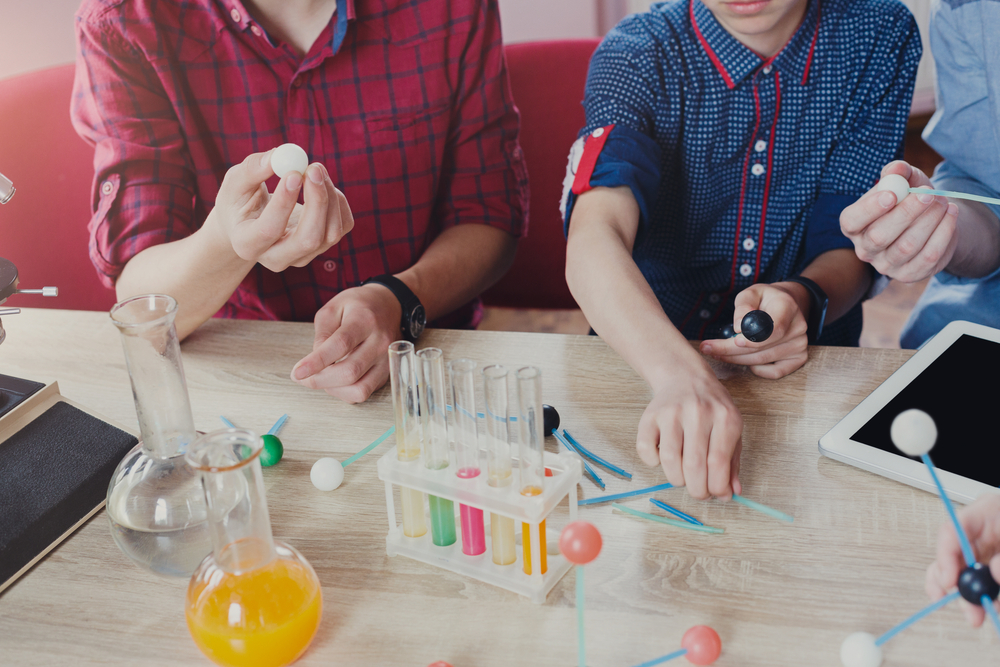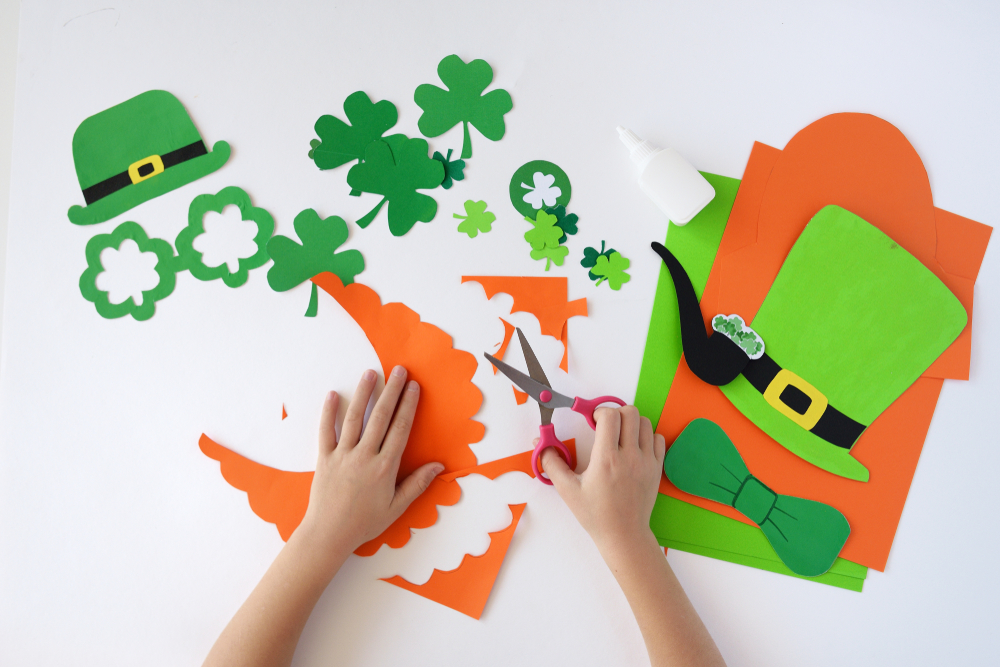Spatial awareness Normal Space Worksheets for Ages 6-9
3 filtered results
-
From - To
Introducing our "Spatial Awareness Normal Space Worksheets for Ages 6-9," designed to enhance spatial reasoning and visual-spatial skills in young learners. These engaging worksheets offer fun, educational activities that teach children about directions, positions, and the understanding of how objects relate to one another in space. Ideal for classrooms or at-home learning, this collection supports the development of essential skills useful for mathematics, science, and daily life. Visit us at Kids Academy and unlock your child’s potential with resources that transform learning experiences into enjoyable adventures. Explore our printable worksheets today!
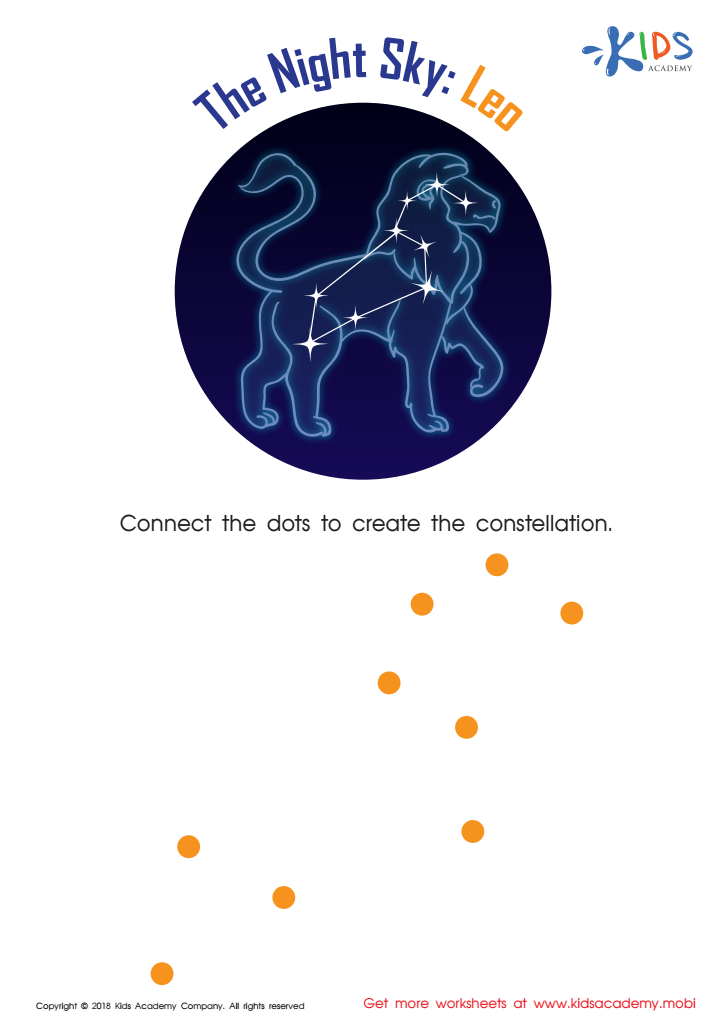

The Night Sky: Leo Worksheet
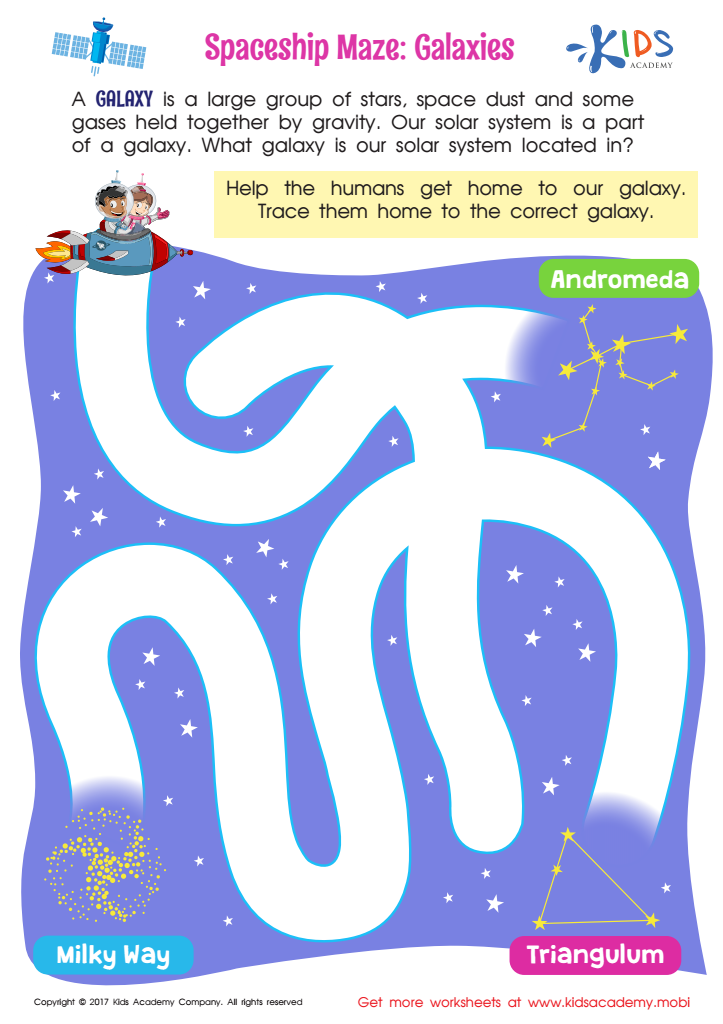

Spaceship Maze: Galaxies Worksheet
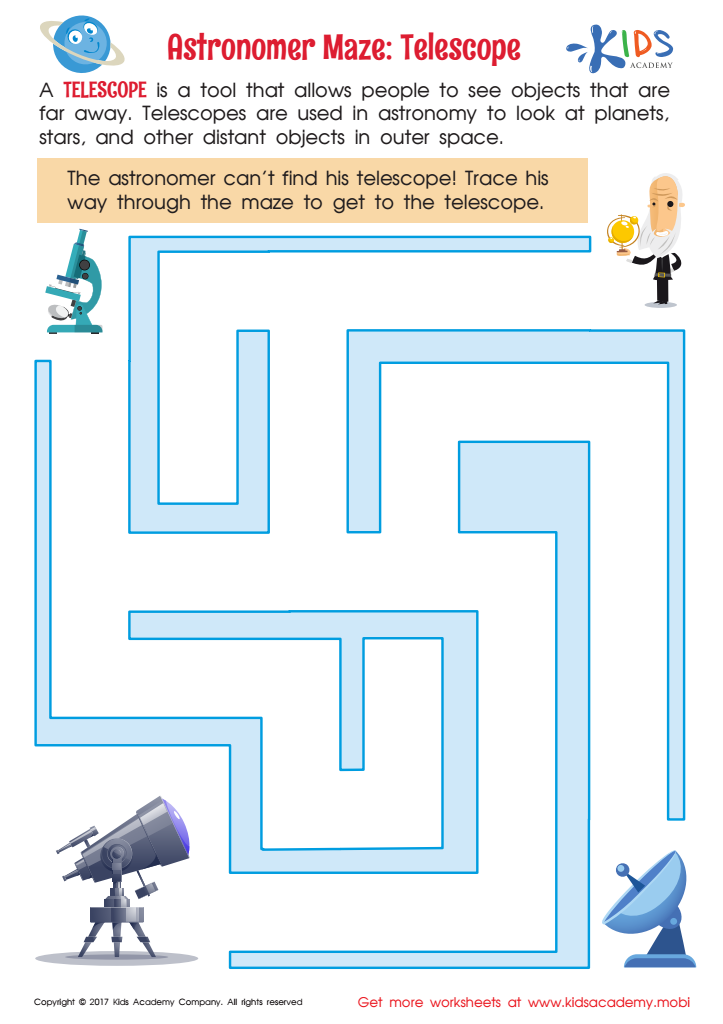

Astronomer Maze: Telescope Worksheet
Spatial awareness is a fundamental skill for children aged 6-9, influencing their ability to navigate and understand the world around them effectively. It is a key component in a child's cognitive development, impacting everything from problem-solving and critical thinking to interpersonal relationships and academic success.
For parents and teachers, fostering spatial awareness can significantly enhance a child's learning experience. Mathematics, for instance, often involves geometry and understanding the relationships between shapes and sizes, both of which require strong spatial skills. Similarly, sports and physical activities demand an acute sense of space for effective movement and coordination, promoting physical health and teamwork.
Moreover, spatial awareness helps children interpret and follow instructions, enhancing their ability to complete tasks efficiently in daily life. This can result in greater independence and self-confidence, as they learn to judge distances, depths, and spatial relationships more accurately.
In addition to academic advantages, good spatial awareness can help in social situations, as children need to understand personal space and the physical boundaries of others. This awareness fosters better communication skills and social interactions.
By focusing on activities that develop spatial awareness, such as puzzles, building blocks, and interactive games, parents and teachers can support a child's overall development, maximizing their potential both inside and outside the classroom.
 Assign to My Students
Assign to My Students


